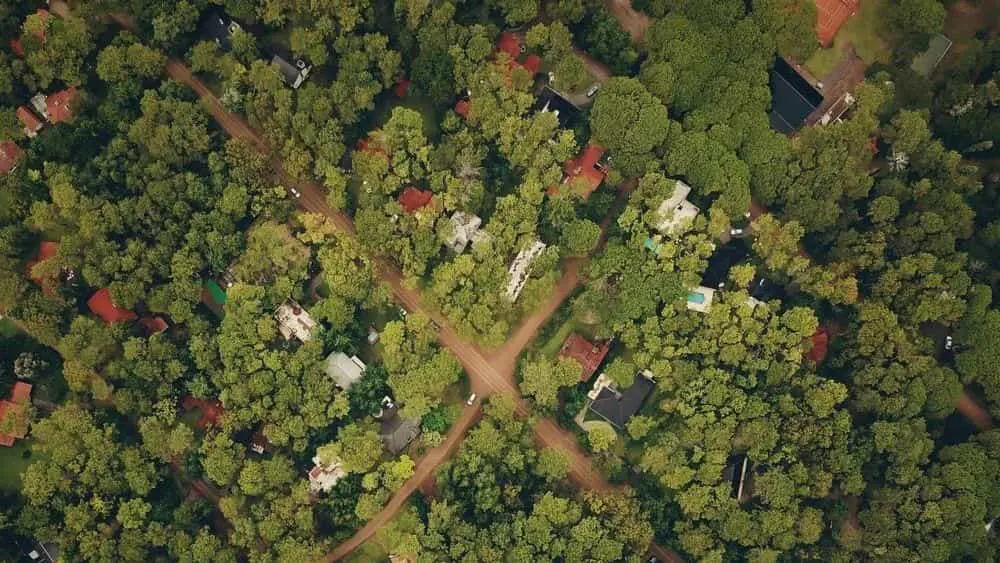
In an effort to spur new construction in rural areas where the dearth of new homes is particularly acute, the Rural Housing Service (RHS) has put in place a construction to permanent loan program.
RHS is a little known housing agency within the Department of Agriculture. It offers a variety of programs to build or improve housing and essential community facilities in rural areas with populations up to 35,000.
But don’t let that number or the term “rural” fool you. Roughly 90 percent of the continental United States is considered rural under the RHS definition. In Ohio, for example, most of the state’s 88 counties are considered partially or entirely rural. Only Cuyahoga (Cleveland) and Summit (Akron) don’t qualify at all.
In California, all of San Bernardino County and most of Riverside Counties are rural by RHS standards. And in Texas, Denton Johnson and Ellis counties – all near Dallas – make the cut, as does Montgomery County, north of Houston.
RHS offers loans, grants and loan guarantees for single and multi-family housing, child care centers, fire and police stations, hospitals, libraries, nursing homes, schools, first responder vehicles and equipment, housing for farm laborers and more.
And since early in the spring, when it quietly launched the C2P program without fanfare, it has been guaranteeing up to 100 percent of the loan amount for would-be buyers who agree to finance construction of their homes as opposed to the builder.
Sometimes known as “single-close” mortgages, C2P comes with its advantages and disadvantages.
On the plus side, it is often easier for the buyer to obtain construction money than the builder, especially in rural regions where there are few lenders and underwriting requirements are stringent – and especially if the builder of choice is under-capitalized.
Another good feature: Even though there is essentially two loans, there is only one set of closing costs. That’s because the construction loans automatically flips over to a permanent mortgage when the house is finished.
Another good feature: Even though there is essentially two loans, there is only one set of closing costs. That’s because the construction loans automatically flips over to a permanent mortgage when the house is finished.
C2P loans are also less expensive – in two ways. First, lenders don’t usually charge borrowers as much as builders. And second, because there is only a single closing, paid by the borrower, the builder has no lending costs, which are always transferred to the buyer.
But on the negative side, there is an element of danger if the buyers picks a builder who goes out of business during construction – or if he chooses a lousy one whose workmanship is below par. Since the buyer’s name is on the loan, he’s the one on the hook, not the builder.
Also once you sign on the dotted line, you are in, all-in. If you should lose your job, are transferred elsewhere or suffer a medical calamity while the house is still under construction, you can’t walk away from a half-built house like you could if you had been approved for conventional financing.
RHS programs are aimed at low and moderate-income families. Consequently, there are income limits, depending on location and the size of the household. But as long as you fall under the ceilings, there are no price constraints.
In the Baltimore-Columbia-Towson area, the limit ranges from $30,950 for a year for a low income, one-person borrower to $86,850 for a moderate income family of eight. But in the Los Angeles-Long Beach-Anaheim-Santa Ana area, the maximum goes from $48,750 for a one-person household to $102,950 for one with eight people.
If you qualify, RHS will back loans at 100 percent of the home’s value. Therefore, no down payment is necessary. Also, you can roll the 1 percent guarantee fee, plus what the agency deems as “reasonable” closing costs, into the loan amount, so out-of-pocket settlement costs are often minimal.
Of course, you have to be approved by a participating lender just like any other loan. Furthermore, you have to agree to personally occupy the dwelling as your primary residence and you must be a U.S. citizen, a non-citizen national or qualified immigrant.
One lender who “has really run with the program,” according to RHS spokesperson Jacqueline Susmann, is 1st Signature Mortgage of Indianapolis, which is working with several regional builders in eight Midwestern states.
“Everybody we’ve talked to so far” is interested in the program, says 1st Signature CEO Victor Vance. Among the companies already signed up are TK Constructors, which builds in Ohio, Kentucky and Indiana; Taylor Homes in Kentucky, Indiana and Tennessee; and Granite Ridge in Ft. Wayne, Ind.
Many of the builders the lender works with are on-your-lot companies that deal with buyers who already have their own building sites. And some build 500-700 one-your-lot houses a year, Vance says.
To be eligible, lenders must have at least two years of experience originating and administering construction loans. Participating builders, too, must pass through a USDA review process.
According to Chellie Hamecs, vice president of housing finance at the National Association of Home Builders, her members are warming to the program, which was discussed at length at NAHB’s Mid-Year meeting in Miami.
Curtis Milton, director of single-family finance at the NAHB, says builders who have used similar financing in the past like the idea that the risk is transferred to the buyer. And lenders like it because they can sell the loans on the secondary market immediately, he says, rather than waiting until they switch from construction phase to permanent status.
To determine the income limits in your area – and to see if the address where your home will be building is in a designated rural area – go to www.rd.usda.gov.

Lew Sichelman is a nationally syndicated housing and real estate columnist. He has covered the real estate beat for more than 50 years.
 How to Make Sure You Qualify for a Home Loan
How to Make Sure You Qualify for a Home Loan
Sherri Earthman
Hello! I am looking for a builder who can build me a home on my own lot. I will also have my complete home package for my home. Just needing someone to build it for me. Please advise. Thank you!
Fred Hopkins
Hi Sherri,
You can find a number of builders that will build on your lot just by going to https://www.newhomesource.com/, search for your city, and click the tab labeled “custom & build on your lot.”